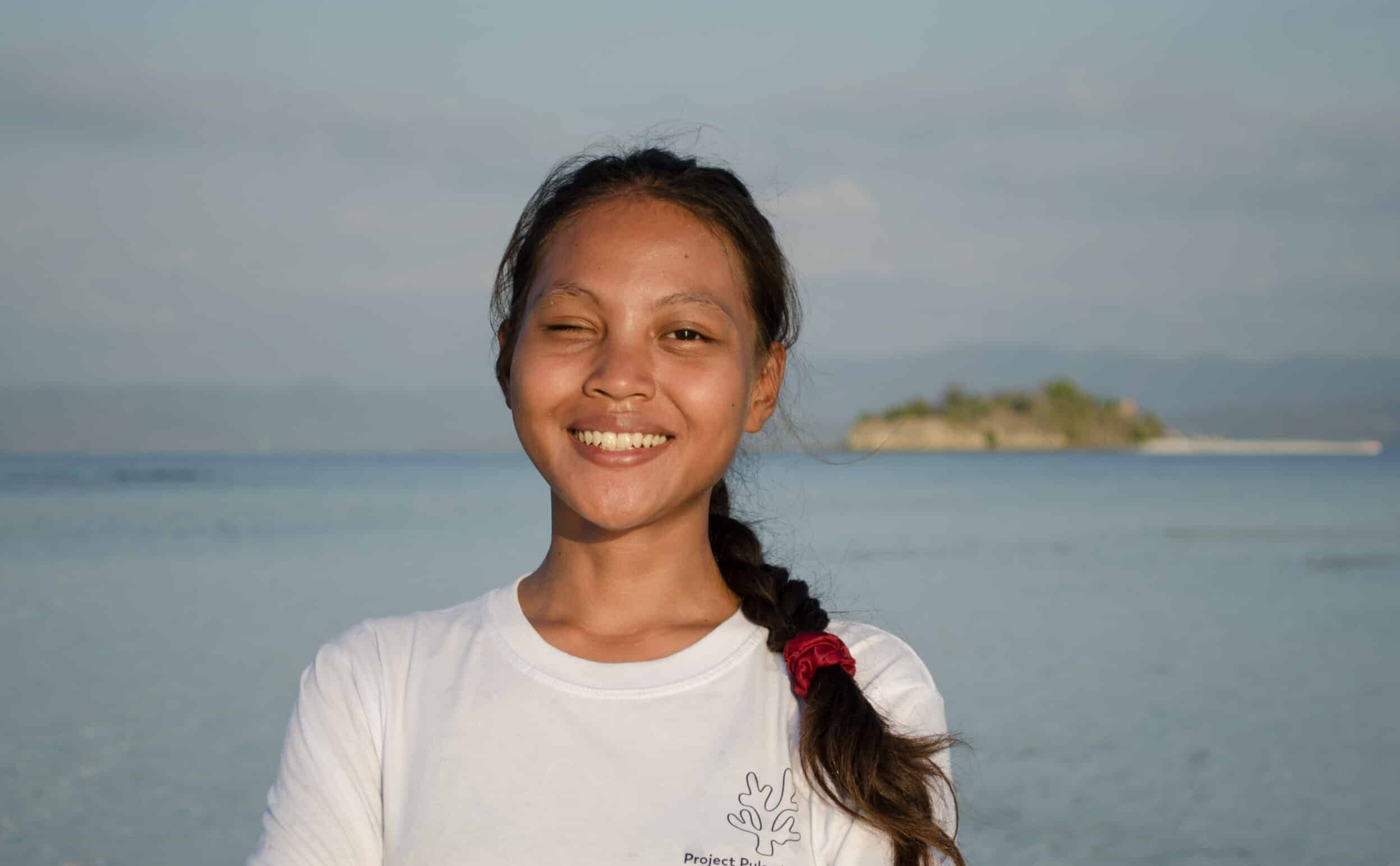Meet Eva Damayanti, the guardian of corals in Hatamin, Indonesia.

In this series of articles, we invite you to meet the people who shape our organisation — those who inspire and motivate us.
For this second feature, we give the floor to Eva Damayanti, Scientific Manager and Administrative Officer of the “Pulau Hatamin Coral Sanctuary” programme in Indonesia.
Can you introduce yourself in a few words:
Hi, my name is Eva Damayanti and work for the Pulau Hatamin Coral Sanctuary project with Coral Guardian and the WES Foundation in Indonesia, Labuan Bajo. I am the Scientific and Administrative role of the team.
How did you start working in coral restoration?
I started working in coral restoration in 2018 when I joined the Anemon Diving Club at my university. Through the organization, I participated in coral transplantation and monitoring activities, which sparked my passion for marine conservation and led me to continue working in this field.
What motivated you to join Coral Guardian?
Joining Coral Guardian felt meaningful to me because it combines coral reef restoration with community empowerment. I believe that marine conservation is not only about protecting the ecosystem but also about supporting the people who depend on it.
Is there a value or a word that sums up the spirit of Coral Guardian / the restoration programs?
For me, the spirit of Coral Guardian is all about collaboration, because the success of coral restoration depends on working together with local communities and partners.
What does a typical day look like for you in the field?
My day usually starts with preparing the equipment before going to Hatamin Island. Once we arrive, we do freediving to monitor coral tables, clean them, or plant new corals. After the field activities, I help organize and input the collected data, and prepare reports or materials for the next activity.
What gives you energy in this work?
Seeing the corals grow healthy and knowing that our efforts have a positive impact on the reef give me incredible energy. Working with a passionate team and being close to the ocean every day also keeps me motivated.
Can you describe the restoration site for us?
The restoration site is located on Hatamin Island, a small island surrounded by clear blue water and coral reefs. The area is shallow, with depths ranging from 2 to 7 meters, making it ideal for freediving activities. Currently, the total restoration area covers around 1.2 hectares, with 688 tables planted and approximately 78,000 corals transplanted.
What are the main steps involved in the restoration work?
First, we prepare a metal structure in the shape of a table and attach wire to each intersection. Then, we collect healthy coral fragments to be attached to the table. Once the coral fragments are ready, we tie them securely to the wire. It’s important to make sure the fragments are firmly attached and not too loose so they can grow properly. Finally, when all intersections are filled with corals, the table is ready to be placed in the restoration zone. Our next tasks are to maintain the tables weekly and monitor the corals monthly to ensure they are growing well.
What do you think is your team’s greatest strength?
Our team’s greatest strength is our shared dream to protect and restore marine life. We all believe that even small actions can make a big difference for the ocean.
What are the biggest challenges you face?
The biggest challenge we currently face is the high number of Drupella snails in our restoration area, which has caused the death of many corals. However, with our team’s strong effort and commitment, we hope this issue can be resolved soon.
And what are your greatest achievements?
My greatest achievement is being part of the team that successfully transplanted over 78,000 corals in Hatamin. I’m proud to see the corals growing and marine life returning to the area.
Why is it so important to restore reefs?
Restoring reefs is important because coral reefs are the foundation of marine ecosystems. They provide habitat for many species, protect coastlines from erosion, and support local communities that depend on them for food and livelihood. By restoring reefs, we help preserve both marine biodiversity and people’s well being.
What is your best memory related to Coral Guardian?
Involving local fishers and children in coral planting was one of the most memorable experiences for me. Seeing their excitement and enthusiasm gave me so much joy and hope for the future. It was a beautiful reminder that conservation is not only about restoring corals, but also about inspiring people to care for the ocean together.
What is your most beautiful encounter in the Ocean?
Seeing a baby white tip shark hiding under the coral transplantation structure was one of the most beautiful moments for me. It felt amazing to witness how the restored area is becoming a safe habitat for marine life again. Moments like that remind me why this work truly matters.
How do you interact with local communities?
We work with local communities by involving them in coral planting and recording their daily catch. This helps them understand the connection between healthy reefs and sustainable livelihoods.
In your opinion, what concrete changes does coral restoration bring?
Coral restoration helps reefs recover, providing habitat for fish and other marine life. It also improves biodiversity, protects coastlines, and supports local communities that depend on the ocean.
If you could send a message to the people who adopt a coral, what would you tell them?
Thank you for adopting a coral and supporting the restoration of our reefs. Your contribution helps protect marine life and restore the ocean. Every coral you adopt makes a real difference, and I hope you feel proud knowing you are part of this journey.
If you could describe the Ocean in one word, which one would you choose?
Life

